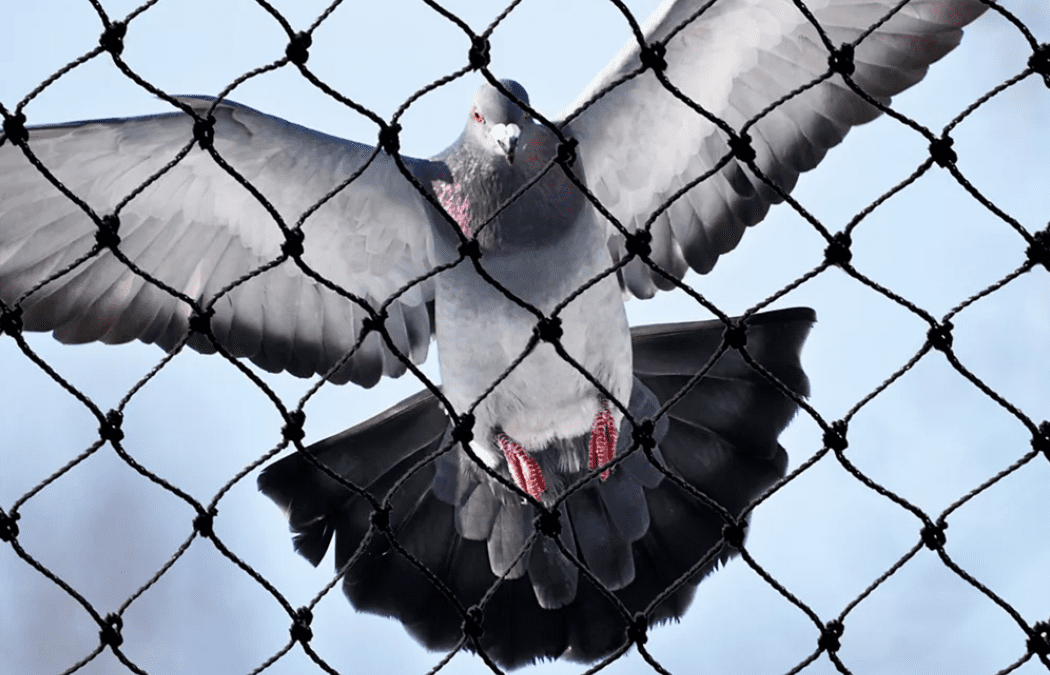
by Pigeon Patrol | Sep 14, 2021 | 4-S Gel Bird repellent, Animal Deterrent Products, Bird Deterrent Products, Bird Law, Bird Netting, Bird Spikes
LITTLE ROCK — Missing for months, colorful flocks of birds suddenly reappear.
And they’ve navigated with such precision – despite lengthy journeys with no maps – that they return to the same park, the same yard or even the same tree.
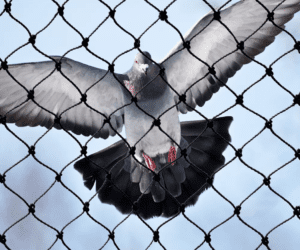
bird netting vancouver
Do they hear their way home?
That’s a new theory proposed by U.S. Geological Survey geophysicist Jon Hagstrum, whose research suggests that birds navigate using earth’s low-frequency sound waves to identify the “address” of home.
“They are imprinting on the characteristic sound” of where they live, he told a crowd at the survey’s headquarters in Menlo Park, Calif. “The terrain has characteristic frequencies. I think that is the sound they are listening to.”
He thinks that birds perceive the world as a vast sonic environment, hearing many frequencies bouncing off different landmarks, such as mountains and buildings, generated by the earth’s movement.
It has long been known that birds use celestial and magnetic compass senses to orient their flight. But how do they determine their location, so they can select the correct homeward bearing? That remains controversial.
Using a body of homing-pigeon data, along with weather records and atmospheric-modeling software, Hagstrum found strong correlations between pigeon races gone haywire and disrupted “infrasonic” waves.
Humans can’t hear infrasound, but birds can. These very low-frequency acoustic waves come from different natural sources, but particularly the subtle tremors of the earth’s crust – so each part of the planet has its own distinct “sonic signature.” And these infrasonic sounds travel thousands of miles, far longer than ordinary sound waves.
The finely calibrated and seasonal pull of migration is a longstanding mystery, especially to those of us who manage to miss well-marked exit ramps on the highway.
A creature weighing mere ounces can fly thousands of miles, through darkness and storm, then land at our modest feeder.
“Site specificity is fascinating,” said Bob Power, director of the Santa Clara County Audubon Society. “Birds return to the exact same backyard, or corner of the park, year after year. Anybody who has had a bird that disappeared for six months, and returned in the exact same spot, has to be puzzled. How do they do that?
“Many, many theories, from many different experts, have been put forth,” he said.
Birds wintering down in South America are unlikely to hear the sounds of their final Bay Area destination thousands of miles away, Hagstrum said. Rather, he proposes that they break up their journey into sections – then fly from one distinctive set of sounds, or “wave points,” to another.
Because they fly in flocks, younger birds learn these distinctive wave points while traveling with their elders. And when they get lost, they circle, perhaps to re-orient what they’re hearing, he said.
Hagstrum was intrigued by pigeon-racing disasters and, in his spare time, decided to investigate what went wrong.
The most infamous incident took place on June 29, 1997, at a celebration of Britain’s Royal Pigeon Racing Association’s 100th anniversary. More than 60,000 trained birds – the best of the best – were released from southern France. Then, the crowd anxiously awaited their arrival home in southern England.
Just a few thousand of the birds were ever seen again.
What happened? Pigeon fanciers fear losing one or two birds, but tens of thousands?
Hagstrum noticed a curious coincidence. That same morning, the Concorde supersonic transport plane was flying across the English Channel en route to New York from Paris. But its departure time was 8:30 a.m.- far earlier than the birds’ 10 a.m. release time.
Phoning the Concorde office, he asked: “Was your plane late that day?” Their response: “Are you a magician?It was two and a half hours late!”
“It was probably the most exciting moment of my career,” he said. “I realized I was onto something.”
He has analyzed three other botched races and also found sources of interrupted infrasonic sound waves.
SIGHT AND SMELL
Other theories hold that sight, smell or magnetism helps orient birds.
While sight and probably smell are useful for local orientation by pigeons, it is unlikely to help long-distance travel, Hagstrum said. Studies show that pigeons can find their lofts even when wearing frosted contact lenses. Secondly, they can’t smell very well. And although wind-borne odors could be brought from afar, it is difficult to imagine how birds, especially in a tail wind, could navigate accurately using odors delivered on variable winds.
He also dismisses the magnetism theory. While the magnetic sense of birds provides an excellent compass for orientation, geomagnetic fields make poor maps, he said. Research shows that pigeons usually depart from the release site in the direction of their home loft – and follow nearly straight-line courses along the way that are inconsistent with magnetic field gradients.
A magnetic map also cannot explain why pigeons have difficulty orienting over large bodies of water. But the infrasonic signals emitted by the earth ’s crust can be confused by similar signals emitted by water waves, he said.
Much work remains to be done, he said. Hagstrum, who studies the earth ’s magnetism in his day job as a geophysicist, hopes to publish the findings of his pigeon hobby in a peer-reviewed scientific journal within a year.
Source
Pigeon Patrol Products & Services is the leading manufacturer and distributor of bird deterrent (control) products in Canada. Pigeon Patrol products have solved pest bird problems in industrial, commercial, and residential settings since 2000, by using safe and humane bird deterrents with only bird and animal friendly solutions. At Pigeon Patrol, we manufacture and offer a variety of bird deterrents, ranging from Ultra-flex Bird Spikes with UV protection, Bird Netting, 4-S Bird Gel and the best Ultrasonic and audible sound devices on the market today.
Voted Best Canadian wholesaler for Bird Deterrent products ten years in a row.
Contact us at 1- 877– 4– NO-BIRD, (604) 585-9279 or visit our website at www.pigeonpatrol.ca
Pigeon/Pigeon Patrol / Pigeons Roosting / Vancouver Pigeon Control /Bird Spikes / Bird Control / Bird Deterrent / Pigeon Deterrent? Surrey Pigeon Control / Pest /Seagull deterrent / Vancouver Pigeon Blog / Birds Inside Home / Pigeons in the cities / Ice Pigeons/ What to do about pigeons/ sparrows , Damage by Sparrows, How To Keep Raccoons Away, Why Are Raccoons Considered Pests/ De-fence / Pigeon Nesting/ Bird Droppings / Pigeon Dropping/ woodpecker control/ Professional Bird Control Company/ Keep The Birds Away/ Birds/rats/ seagull/pigeon/woodpecker/ dove/sparrow/pidgeon control/pidgeon problem/ pidgeon control/flying rats/ pigeon Problems/ bird netting/bird gel/bird spray/bird nails/ bird guard

by Pigeon Patrol | Sep 7, 2021 | Animal Deterrent Products, Bird Deterrent Products, Bird Law, Bird Netting, Bird Spikes
FERAL PIGEONS
Common names: Rock pigeon, rock dove, domestic pigeon, common pigeon
Genus and species: Columba Livia
Order: Columbiformes
Family: Columbidae
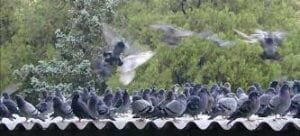
A common sight in urban areas around the world, the pigeon is not native to North America. Rather, pigeons were introduced into North America in the early 1600’s. City buildings and window ledges mimic the rocky cliffs originally inhabited by their ancient ancestors in Europe.
The pigeon has a long history of association with humans, having been used for food and entertainment for over 5,000 years. Escaped pigeons from breeders readily form flocks, and other stray birds may join them, thus becoming a feral population. Because of their domestic roots, and because people have bred pigeons for many different colors and accessories, feral pigeons can have a variety of feathered looks[1].
The rock pigeon makes a flimsy nest, but it often reuses the same location repeatedly, even building a new nest on top of the last one. Because the pigeons do not try to remove the feces of their nestlings, the nest becomes a sturdy, mud-like mound that gets larger over time.
Homing pigeons, are well known for their ability to find their way back home from long distances and at high speed. Despite these demonstrated abilities, feral pigeons are rather sedentary and rarely leave their local areas. In fact, when relocated involuntarily, they can return – sometimes within hours – to their original location.
DESCRIPTION
-
Size: 11-14 inches
-
Wingspan: 20-26 inches
-
Weight: 9 – 13 ounces
-
Color variable, but wild birds are gray.
-
White rump.
-
Rounded tail, usually with dark tip.
-
Pale gray wings have two black bars.
TYPES OF PIGEON DAMAGE AND THE RISKS
Pigeons and their feces can cause damage to structures and represent health and safety risks. There is a range of methods to control them. Our detailed guide “How to Get Rid of Pigeons” addresses all the different control methods and describes them in some detail. The damage and risk from pigeons typically fall into these categories:
-
Pigeon droppings deface and accelerate the deterioration of buildings and increase the cost of maintenance. Large amounts of droppings may kill vegetation and produce an objectionable odor. A flock of just 100 pigeons can produce up to 4,800 pounds of guano, annually.
-
Pigeon manure deposited on park benches, statues, cars, and unwary pedestrians is an aesthetic problem. Around grain handling facilities, pigeons consume and can contaminate large quantities of food destined for human or livestock consumption.
-
Pigeons can carry and spread diseases to people and livestock through their droppings. Additionally, under the right conditions, pigeon manure may harbor airborne spores of the causal agent of histoplasmosis, a systemic fungus disease that can infect humans.
MORE PIGEON FACTS
-
Pigeons are found to some extent in nearly all urban areas around the world. It is estimated that there are 400 million pigeons worldwide and that the population is growing rapidly together with increased urbanization. The population of pigeons in New York City alone is estimated to exceed 1 million birds.
-
Sexes look nearly identical, although males are larger and have more iridescence on their neck.
-
Juveniles are very similar in appearance to adults, but duller and with less iridescence.
-
Pigeons are highly dependent on humans to provide them with food and sites for roosting, loafing, and nesting. They are commonly found around farm yards, grain elevators, feed mills, parks, city buildings, bridges, and other structures, although they can live anywhere where they have adequate access to food, water and shelter.
-
Pigeons feed in flocks and will consume seeds, fruits and rarely invertebrates, although can subsist just fine on street scraps.
-
Pigeons require about 1 ounce (30 ml) of water daily. They rely mostly on free-standing water but they can also use snow to obtain water.
-
The average pigeon requires 30 grams of dry matter per day, roughly 10% of their body weight.
PIGEON REPRODUCTION
-
Pigeons are monogamous and typically mate for life.
-
Female pigeons can reach sexual maturity as early as 7 months of age.
-
Pigeons build a flimsy platform nest of straw and sticks, put on a ledge, under cover, often located on the window ledges of buildings.
-
Eight to 12 days after mating, the females lay 1 to 3 (usually 2) white eggs which hatch after 18 days.
-
Condition at Hatching: Helpless, with sparse yellow or white down.
-
Chicks fledge (leave the nest) in 25-32 days (45 days in midwinter).
-
The male provides nesting material and guards the female and the nest.
-
The young are fed pigeon milk, a liquid/solid substance secreted in the crop of the adult (both male and female) which is regurgitated.
-
More eggs are laid before the first clutch leaves the nest.
-
Breeding may occur in all seasons, but peak reproduction occurs in the spring and fall. A population of pigeons usually consists of equal numbers of males and females. When populations suddenly decrease, pigeon production increases and will soon replenish the flock.
-
In captivity, pigeons commonly live up to 15 years and sometimes longer. In urban populations, however, pigeons seldom live more than 2 or 3 years. Natural mortality factors, such as predation by mammals and other birds, diseases, and stress due to lack of food and water, reduce pigeon populations by approximately 30% annually.
-
One of the most effective and humane ways of pigeon control is the Ovocontrol birth control program, which naturally decreases the pigeon population.
Source
Pigeon Patrol Products & Services is the leading manufacturer and distributor of bird deterrent (control) products in Canada. Pigeon Patrol products have solved pest bird problems in industrial, commercial, and residential settings since 2000, by using safe and humane bird deterrents with only bird and animal friendly solutions. At Pigeon Patrol, we manufacture and offer a variety of bird deterrents, ranging from Ultra-flex Bird Spikes with UV protection, Bird Netting, 4-S Bird Gel and the best Ultrasonic and audible sound devices on the market today.
Voted Best Canadian wholesaler for Bird Deterrent products ten years in a row.
Contact us at 1- 877– 4– NO-BIRD, (604) 585-9279 or visit our website at www.pigeonpatrol.ca
Pigeon/Pigeon Patrol / Pigeons Roosting / Vancouver Pigeon Control /Bird Spikes / Bird Control / Bird Deterrent / Pigeon Deterrent? Surrey Pigeon Control / Pest /Seagull deterrent / Vancouver Pigeon Blog / Birds Inside Home / Pigeons in the cities / Ice Pigeons/ What to do about pigeons/ sparrows , Damage by Sparrows, How To Keep Raccoons Away, Why Are Raccoons Considered Pests/ De-fence / Pigeon Nesting/ Bird Droppings / Pigeon Dropping/ woodpecker control/ Professional Bird Control Company/ Keep The Birds Away/ Birds/rats/ seagull/pigeon/woodpecker/ dove/sparrow/pidgeon control/pidgeon problem/ pidgeon control/flying rats/ pigeon Problems/ bird netting/bird gel/bird spray/bird nails/ bird guard

by Pigeon Patrol | Aug 31, 2021 | 4-S Gel Bird repellent, Animal Deterrent Products, Bird Deterrent Products, Bird Law, Bird Netting, Bird Spikes
With bits of DNA extracted from century-old museum specimens, researchers have found a place for the extinct Passenger Pigeon (Ectopistes migratorius) in the family tree of pigeons and doves, identifying this unique bird’s closest living avian relatives for the first time. The new analysis, which appears this month in Molecular Phylogenetics and Evolution, reveals that the Passenger Pigeon was most closely related to other North and South American pigeons, and not to the Mourning Dove, as was previously suspected.
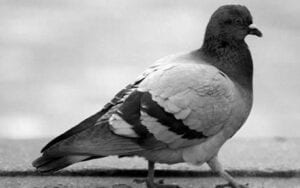
“This research demonstrates the remarkable potential of DNA to answer questions about species that no longer populate our planet,” says Dr. Jack Dumbacher, Curator of Ornithology at the California Academy of Sciences. “The Passenger Pigeon has been extinct for almost 100 years, but with the help of museum specimens and DNA analysis, we’re still learning new information about the bird’s evolutionary history and its place on the tree of life.”
Naturalists have long lamented that one of North America’s most spectacular birds was also one of the first to be driven to extinction by humans. In the early 1800s, the Passenger Pigeon was the most abundant bird species on the planet, even though its range was limited to the eastern and central forests of the United States and parts of eastern Canada. Flocks of Passenger Pigeons included millions of birds—they were so vast that they darkened swaths of the sky up to a mile wide.
Passenger Pigeons followed their food, settling down in forests that periodically produced a superabundance of acorns and chestnuts. The pigeons nested in dense colonies covering hundreds of acres. This made them easy targets for human predators. Intensive pigeon hunting in the mid-to-late 19th century disrupted the birds’ ability to breed. These hunting sprees, coupled with habitat destruction, rapidly drove the Passenger Pigeon to extinction. (The last of her kind, a Passenger Pigeon named Martha, died in the Cincinnati Zoo in 1914.)
To find the Passenger Pigeon’s place in the evolutionary history of pigeons and doves, Dumbacher and his colleagues compared sequences from two of its mitochondrial genes with those of 78 species of pigeons and doves from around the world. Their analysis revealed a surprising result. Most scientists had assumed that the Passenger Pigeon’s closest relative was the Mourning Dove, a smaller species that shared the Passenger Pigeon’s relatively long tail. However, the DNA comparison showed that the extinct bird’s closest living relative is the Band-Tailed Pigeon (Patagioenas fasciata), a bird that is commonly found in California.
North America’s largest pigeon, the Band-Tailed Pigeon is distinguished not only by its large size but by its distinctive coloring, with yellow legs, a patch of iridescent greenish-bronze feathers on its neck, and a yellow bill with a black tip. Despite its large size, the bird is surprisingly adept at feeding on berries and seeds in the tops of trees. In northern California, it is found in mixed evergreen forests and redwood forests.
Source
Pigeon Patrol Products & Services is the leading manufacturer and distributor of bird deterrent (control) products in Canada. Pigeon Patrol products have solved pest bird problems in industrial, commercial, and residential settings since 2000, by using safe and humane bird deterrents with only bird and animal friendly solutions. At Pigeon Patrol, we manufacture and offer a variety of bird deterrents, ranging from Ultra-flex Bird Spikes with UV protection, Bird Netting, 4-S Bird Gel and the best Ultrasonic and audible sound devices on the market today.
Voted Best Canadian wholesaler for Bird Deterrent products ten years in a row.
Contact us at 1- 877– 4– NO-BIRD, (604) 585-9279 or visit our website at www.pigeonpatrol.ca
Pigeon/Pigeon Patrol / Pigeons Roosting / Vancouver Pigeon Control /Bird Spikes / Bird Control / Bird Deterrent / Pigeon Deterrent? Surrey Pigeon Control / Pest /Seagull deterrent / Vancouver Pigeon Blog / Birds Inside Home / Pigeons in the cities / Ice Pigeons/ What to do about pigeons/ sparrows , Damage by Sparrows, How To Keep Raccoons Away, Why Are Raccoons Considered Pests/ De-fence / Pigeon Nesting/ Bird Droppings / Pigeon Dropping/ woodpecker control/ Professional Bird Control Company/ Keep The Birds Away/ Birds/rats/ seagull/pigeon/woodpecker/ dove/sparrow/pidgeon control/pidgeon problem/ pidgeon control/flying rats/ pigeon Problems/ bird netting/bird gel/bird spray/bird nails/ bird guard

by Pigeon Patrol | Aug 26, 2021 | 4-S Gel Bird repellent, Animal Deterrent Products, Bird Deterrent Products, Bird Law, Bird Netting
Objective: The main objectives of the present study were to investigate the rock pigeon parasitic communities from Iraq as well as reporting on the prevalence and intensity of various infections from both sexes.

Methods: An examination of 128 specimens of the live rock pigeon Columba livia from Iraq was undertaken. The samples were obtained from several localities of Iraq. Blood samples were examined for haemoprotozoa, carcasses were investigated for the ectoparasites throughout their body skins and feathers, and the alimentary canal was examined for protozoans and helminths.
Results: Twenty-seven species of parasites were identified. They comprised 1 Fungi, Candida sp.; 4 Protozoa, Eimeria labbeana, Trichomonas gallinae, Haemoproteus columbae and Plasmodium sp.; 8 Cestoda, 4 of each of the genera Cotugnia and Raillietina; 4 Nematoda, Ascaridia columbae, A. galli, Capillaria obsignata and Synhimantus spiralis; and 10 Arthropoda, the commonest of which were the wing and tail feather louse Columbicola sp. and the pigeon louse fly Pseudolinchia canariensis. Infection indices are provided for each species and in respect to both sexes of the host.
Conclusion: The issue of zoonosis is raised, so is the role of the rock pigeons in acting as a reservoir and spreading some of the disease agents associated with other avian populations including poultry. Seven of the species are newly introduced to the parasitological list of Iraq and for this country the rock pigeon is a new host record for another 9 of the endoparasites that were diagnosed.
Source
Pigeon Patrol Products & Services is the leading manufacturer and distributor of bird deterrent (control) products in Canada. Pigeon Patrol products have solved pest bird problems in industrial, commercial, and residential settings since 2000, by using safe and humane bird deterrents with only bird and animal friendly solutions. At Pigeon Patrol, we manufacture and offer a variety of bird deterrents, ranging from Ultra-flex Bird Spikes with UV protection, Bird Netting, 4-S Bird Gel and the best Ultrasonic and audible sound devices on the market today.
Voted Best Canadian wholesaler for Bird Deterrent products ten years in a row.
Contact us at 1- 877– 4– NO-BIRD, (604) 585-9279 or visit our website at www.pigeonpatrol.ca
Pigeon/Pigeon Patrol / Pigeons Roosting / Vancouver Pigeon Control /Bird Spikes / Bird Control / Bird Deterrent / Pigeon Deterrent? Surrey Pigeon Control / Pest /Seagull deterrent / Vancouver Pigeon Blog / Birds Inside Home / Pigeons in the cities / Ice Pigeons/ What to do about pigeons/ sparrows , Damage by Sparrows, How To Keep Raccoons Away, Why Are Raccoons Considered Pests/ De-fence / Pigeon Nesting/ Bird Droppings / Pigeon Dropping/ woodpecker control/ Professional Bird Control Company/ Keep The Birds Away/ Birds/rats/ seagull/pigeon/woodpecker/ dove/sparrow/pidgeon control/pidgeon problem/ pidgeon control/flying rats/ pigeon Problems/ bird netting/bird gel/bird spray/bird nails/ bird guard
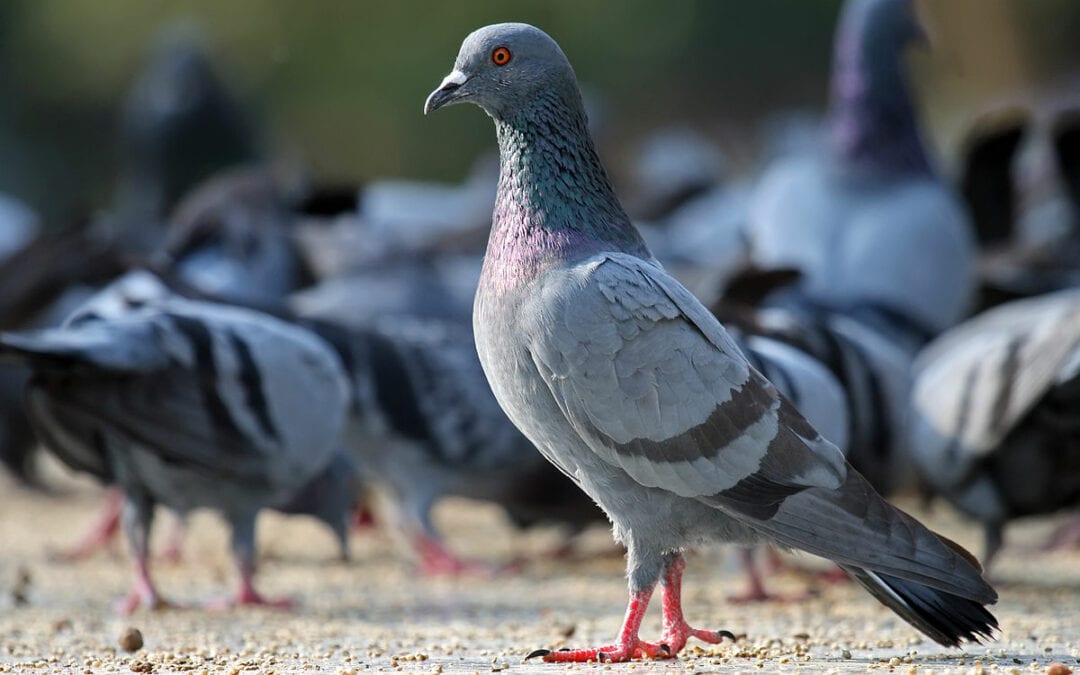
by Pigeon Patrol | Aug 17, 2021 | 4-S Gel Bird repellent, Animal Deterrent Products, Bird Deterrent Products, Bird Law, Bird Netting, Bird Spikes
The number of passenger pigeons went from billions to zero in mere decades, in contrast to conventional wisdom that enormous population size provides a buffer against extinction. Our understanding of the passenger pigeon’s extinction, however, has been limited by a lack of knowledge of its long-term population history. Here we use both genomic and ecological analyses to show that the passenger pigeon was not always super abundant, but experienced dramatic population fluctuations, which could increase its vulnerability to human exploitation. Our study demonstrates that high-throughput–based ancient DNA analyses combined with ecological niche modeling can provide evidence allowing us to assess factors that led to the surprisingly rapid demise of the passenger pigeon.
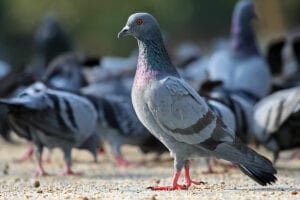
To assess the role of human disturbances in species’ extinction requires an understanding of the species population history before human impact. The passenger pigeon was once the most abundant bird in the world, with a population size estimated at 3–5 billion in the 1800s; its abrupt extinction in 1914 raises the question of how such an abundant bird could have been driven to extinction in mere decades. Although human exploitation is often blamed, the role of natural population dynamics in the passenger pigeon’s extinction remains unexplored. Applying high-throughput sequencing technologies to obtain sequences from most of the genome, we calculated that the passenger pigeon’s effective population size throughout the last million years was persistently about 1/10,000 of the 1800’s estimated number of individuals, a ratio 1,000-times lower than typically found. This result suggests that the passenger pigeon was not always super abundant but experienced dramatic population fluctuations, resembling those of an “outbreak” species. Ecological niche models supported inference of drastic changes in the extent of its breeding range over the last glacial–interglacial cycle. An estimate of acorn-based carrying capacity during the past 21,000 y showed great year-to-year variations. Based on our results, we hypothesize that ecological conditions that dramatically reduced population size under natural conditions could have interacted with human exploitation in causing the passenger pigeon’s rapid demise. Our study illustrates that even species as abundant as the passenger pigeon can be vulnerable to human threats if they are subject to dramatic population fluctuations, and provides a new perspective on the greatest human-caused extinction in recorded history.
Source
Pigeon Patrol Products & Services is the leading manufacturer and distributor of bird deterrent (control) products in Canada. Pigeon Patrol products have solved pest bird problems in industrial, commercial, and residential settings since 2000, by using safe and humane bird deterrents with only bird and animal friendly solutions. At Pigeon Patrol, we manufacture and offer a variety of bird deterrents, ranging from Ultra-flex Bird Spikes with UV protection, Bird Netting, 4-S Bird Gel and the best Ultrasonic and audible sound devices on the market today.
Voted Best Canadian wholesaler for Bird Deterrent products ten years in a row.
Contact us at 1- 877– 4– NO-BIRD, (604) 585-9279 or visit our website at www.pigeonpatrol.ca
Pigeon/Pigeon Patrol / Pigeons Roosting / Vancouver Pigeon Control /Bird Spikes / Bird Control / Bird Deterrent / Pigeon Deterrent? Surrey Pigeon Control / Pest /Seagull deterrent / Vancouver Pigeon Blog / Birds Inside Home / Pigeons in the cities / Ice Pigeons/ What to do about pigeons/ sparrows , Damage by Sparrows, How To Keep Raccoons Away, Why Are Raccoons Considered Pests/ De-fence / Pigeon Nesting/ Bird Droppings / Pigeon Dropping/ woodpecker control/ Professional Bird Control Company/ Keep The Birds Away/ Birds/rats/ seagull/pigeon/woodpecker/ dove/sparrow/pidgeon control/pidgeon problem/ pidgeon control/flying rats/ pigeon Problems/ bird netting/bird gel/bird spray/bird nails/ bird guard
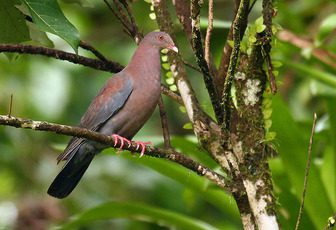
by Pigeon Patrol | Aug 17, 2021 | Bird Deterrent Products, Bird Law, Bird Netting, Bird Spikes, Columbidae, Doves
The Red-billed Pigeon, Patagioenas flavirostris , is a relatively large pigeon which breeds from southern Texas, United States, and northwestern Mexico south to Costa Rica. It belongs to a clade of Patagioenas which generally lack iridescent display plumage, except some vestiges in the Pale-vented Pigeon.
The Red-billed pigeon is classified as Least Concern. Does not qualify for a more at risk category. Widespread and abundant taxa are included in this category.
The Red-billed Pigeon, Patagioenas flavirostris (see Johnson et al. 2001), is a relatively large pigeon which breeds from southern Texas, United States, and northwestern Mexico south to Costa Rica. It belongs to a clade of Patagioenas which generally lack iridescent display plumage, except some vestiges in the Pale-vented Pigeon. It is found in open country with some trees, large clearings and cultivation in lowlands and middle altitudes to 2100 meters.
The Red-billed Pigeon has a large range, estimated globally at 830,000 square kilometers. Native to the United States and Mexico as well as Belize, Costa Rica, El Salvador, Guatemala, Honduras, and Nicaragua, this bird prefers neritic, oceanic, and coastal marine ecosystems. The global population of this bird is estimated at 500,000 to 5,000,000 individuals and does not show signs of decline that would necessitate inclusion on the IUCN Red List.
Red-billed Pigeons in a palm tree in Alajuela, Costa Rica. We first heard their “Cooc cu cu coooo!” calls coming from the palm tree and then easily spotted these large, conspicuous pigeons. Red-billed Pigeon (Patagioenas flavirostris) Adult Red-billed Pigeons have a dull, reddish purple head, breast, and shoulders, a slate gray belly, rump, tail, and wings, magenta legs, orange eyes with a red eye-ring, and a distinctive yellowish white bill with a pinkish red base and cere.
Red-billed Pigeon: Breeds from south Sonora, Mexico south in lowlands along the Pacific slope to Chiapas, and the lower Rio Grande Valley of south Texas and Mexico from eastern Nuevo Leon and Tamaulipas, south along the Atlantic slope to the Yucatan states. Populations of northeastern Mexico and Texas move south during non-breeding season. Preferred habitat includes tropical deciduous forests.
Source
Pigeon Patrol Products & Services is the leading manufacturer and distributor of bird deterrent (control) products in Canada. Pigeon Patrol products have solved pest bird problems in industrial, commercial, and residential settings since 2000, by using safe and humane bird deterrents with only bird and animal friendly solutions. At Pigeon Patrol, we manufacture and offer a variety of bird deterrents, ranging from Ultra-flex Bird Spikes with UV protection, Bird Netting, 4-S Bird Gel and the best Ultrasonic and audible sound devices on the market today.
Voted Best Canadian wholesaler for Bird Deterrent products ten years in a row.
Contact us at 1- 877– 4– NO-BIRD, (604) 585-9279 or visit our website at www.pigeonpatrol.ca
Pigeon/Pigeon Patrol / Pigeons Roosting / Vancouver Pigeon Control /Bird Spikes / Bird Control / Bird Deterrent / Pigeon Deterrent? Surrey Pigeon Control / Pest /Seagull deterrent / Vancouver Pigeon Blog / Birds Inside Home / Pigeons in the cities / Ice Pigeons/ What to do about pigeons/ sparrows , Damage by Sparrows, How To Keep Raccoons Away, Why Are Raccoons Considered Pests/ De-fence / Pigeon Nesting/ Bird Droppings / Pigeon Dropping/ woodpecker control/ Professional Bird Control Company/ Keep The Birds Away/ Birds/rats/ seagull/pigeon/woodpecker/ dove/sparrow/pidgeon control/pidgeon problem/ pidgeon control/flying rats/ pigeon Problems/ bird netting/bird gel/bird spray/bird nails/ bird guard











